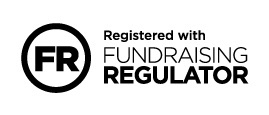Spinner
Youth Leadership
Young people are not just the future — they are the present.
Across the Global South, they make up the majority of the population, yet their voices remain persistently marginalised in decisions that shape their lives. As of November 2022, the global population reached eight billion, with young people aged 15 to 24 accounting for approximately 1.2 billion, or 16%, of that total. This demographic is projected to rise to 1.3 billion by 2030; the vast majority expected to live in low and middle income countries.
Despite their numbers, youth are too often seen as passive recipients of policy and aid, rather than active drivers of social and economic change.
The 2020 Global Youth Development Index reveals a mixed picture: although global youth development has improved by 3.1% since 2010, progress has slowed significantly, and large disparities remain between regions. In low-income countries, youth face entrenched barriers to education, employment, political participation, and digital access — all of which curtail their ability to lead change.
To achieve the Sustainable Development Goals, investment in meaningful youth leadership is not optional — it is essential. When given the opportunity, young people bring innovation, bold ideas, and a unique understanding of their communities’ needs. They are already leading on climate action, education access, peacebuilding, and digital mobilisation — often with limited resources or recognition.
Empowering youth means more than inviting them to the table. It means resourcing their work, building their skills, and treating them as equal partners. Tokenistic approaches to youth engagement must be replaced with models that support co-creation, long-term mentoring, and youth-led accountability. Power imbalances continue to lock young people out of formal decision-making structures, especially in fragile and conflict-affected settings.
Yet around the world, youth-led initiatives are building local resilience, improving service delivery, and bridging divides across generations. Investing in youth leadership is not only a question of justice — it is one of effectiveness. From community development to global governance, the energy, creativity and commitment of young people are vital drivers of progress. If we are serious about creating a more just, sustainable and peaceful world, we must take youth leadership seriously and support it at every level.
In achieving its mission, EAA believes young people are not only the beneficiaries of its work but also the key agents in finding solutions and bringing positive change to the world. The key themes of youth development and empowerment are at the forefront of all of our projects.
EAA seeks to strengthen youth advocacy for peace and adherence to international humanitarian norms. Education is the driver of human development, and it is through sharing knowledge that we can overcome obstacles to a better future. The aim is not simply to offer an education to more children but to promote civic leadership, the rule of law and the right to education as three key drivers that will enable a more peaceful and just society as well as advance economic empowerment.
By disseminating the message that education is a gateway to peace and should always be a priority in peacebuilding, young people become a force for peace not only in their communities but their countries as well.










